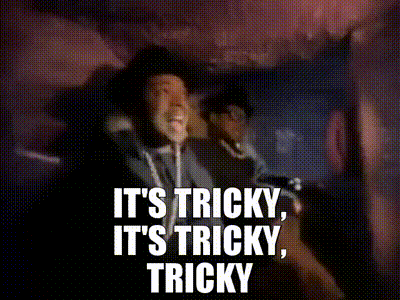AI IN CLASS
fAIr Play
Teaching in a World
That’s Always
Plugged In
AI is no longer the future.
It’s here now.
It was here yesterday.
And if you haven’t started to consider how AI is impacting your practice you’re slippin’.
Every day another article, post, or tweet expounds the growing utility and power of AI.
We’re talkin' about a revolution in the way we think, write, interact, offload tasks and complete our ‘work’ - whatever that work is, or will be.
The ways in which AI is reshaping these areas of our lives is noticeable.
We are experiencing disruption and displacement on a scale unseen in the recent past.
This is not the internet, it’s bigger than that.
Still in its hype cycle as it takes off, AI has already become widespread and pervasive.
For educators, this means we’re tasked (whether we like it or not) with navigating new opportunities and challenges related to integrating AI into our classrooms.
Like it or not, we’ve gotta lump it.
The way we’ve done classroom business in the past is terribly ill-suited to equip the next generation.
Persisting with many current practices as a way of thinking and doing business sets everyone back.
This week I’m beginning to explore how we might make AI a powerful ally, a sidekick, an assistant for teaching without losing sight of the skills and critical thinking we’re here to draw forth from students.
This is the beginning of a deep dive into things.
Are you ready to go down the rabbit hole with me?
Things Done Changed
I don’t have it all figured out yet. I won’t. I can’t. I’ll continually be in the process of figuring things out.
learning - it’s a process, it never ends
AI in the classroom feels a little like being the referee walking onto a field I’ve refereed games on for years and suddenly feeling like I no longer know the rules of the game.
The players are all running around, using AI to score grades and make some pretty sick moves on the field. How much of what I’m seeing is impressive use of the equipment and how much use has little to nothing to do with showcasing the unique talents, skills, and abilities of the players.
What, in terms of AI use, is nothing more than a violation of the game?
I’m watching it all unfold and trying to gather a sense of what might be acceptable rules of play.
I’m letting a lot of things play out to see the end result.
I have to reflect on what the classroom game even even looks like now that AI is part of the play.
Traditional notions of the classroom need to be bent.
Perhaps broken.
Probably discarded.
The old game of school isn’t gonna work anymore.
If you can’t see that already, if you don’t feel that already, you’re likely out of touch.
It’s possible to get with the times, get your prescription checked.
Because your current prescription is a bad one to give to students.
You operating with bad eyes and ears isn’t going to position your students well for the game of life.
So, let’s build a better understanding of the game-play around AI and its uses.
Face the fear that might come with stepping into the new, into the unknown.
I propose building models of understanding around how AI might be used. Teasing things out. Trying to get a sense of “for what” and “when during learning” AI makes sense.
I’m trying to find the tension, feeling out the point at which AI use becomes a violation of the intended learning I think I’ve determined is important for students to demonstrate.
And though bound like an anchor by it, I can’t look at most curriculum for help. In Ontario, so much of the curriculum is outdated and irrelevant to modern day realities facing students who are rushing toward a rapidly changing work landscape.
The tricky thing with AI is it disrupts the premise of traditional learning and displaces traditional practices previously associated with, and considered measures of learning.
What we’ve expected students to know, understand and do is being challenged, and must be changed, as a result of the capabilities of AI.
AI quickly and easily does many things, whether we like it or not, that it makes decreasing sense for us to expect students to do the things we’ve always had them do.
A lot of it just doesn’t make sense any more: traditional tests, taking notes, writing essays.
I’ll challenge all these and many more traditional tasks as desperately needing a rethink.
We must reflect deeply on our practice and the transferable skills students are likely to require in an AI-driven environment.
If our classrooms don’t provide the opportunity to experiment with, train in, develop, and test those skills we’re not setting students up for success.
Our own fears and hesitations around the use of technology, specifically AI, must be faced head-on as we wrestle with AI use - its benefits and its drawbacks for humans.
How we position ourselves as users of AI, and how AI positions us is a real issue to tussle with. There are lots of educators out there experimenting with it, and lots of platforms being designed to help with its use.
The time is here, the place is now, to experiment with AI use for ourselves and for our students.
They’re experimenting with it anyway.
Let’s be at the forefront. Let’s guide and develop their sense of its use, their understanding of its impact, and their awareness of its implications.
Let’s sit alongside them as every single one of us is disrupted and displaced by the rapid development, and deployment of AI into virtually every sphere of our lives.
One thing I need to start developing—and what I think most educators need—is a growing, practical sense of how to use AI as a tool that enhances learning rather than just another shiny distraction.
Make no mistake, AI is intended as another distraction - this is big business.
Securing more of our attention and use of AI is the intended outcome.
AI could easily become a multi-purpose tool for cognitive offloading at a massive scale. Thinking can be contracted out to AI at a very cheap cost.
Navigating the AI revolution is no easy task, and I’m only going to scratch the surface in this week’s newsletter.
Future newsletters will break down the complexity of this into manageable parts.
Don’t worry, I’ve got you covered.
Stick with me.
AI Mayhem: The Good, the Bad, and the WTF Moments
Every time I check my news feed, there’s another “breakthrough” AI tool that promises to revolutionize education. The hype is as overwhelming as it is intimidating.
Teachers aren’t just expected to use these tools; we’re expected to know which ones are worth it, how to integrate them seamlessly, and somehow still meet curriculum standards.
And the stakes are high.
Without clear guidelines, AI could easily veer into "unsportsmanlike conduct" territory, enabling shortcuts rather than deep learning.
What makes sense for students to do, and what makes sense for AI to either assist or do for them?
It's a tough call when the boundaries feel murky, and we’re all figuring it out as we go.
This cognitive offload, this tradeoff to AI as a work assistant, requires some careful thought.
Game On: Winning with AI in the Classroom
Step 1: Define the Playing Field
Think of your classroom as a sports arena.
The subject matter is the “game,” it’s the stuff students toss around and interact with.
AI is a piece of equipment students can use during play.
How will the game adapt and respond to the introduction of a new piece of equipment that drastically disrupts the way the game has always been played.
AI also displaces the need for players to be able to do some things that we have traditionally associated with playing the game.
We’re left with many questions.
A few important questions might be:
What’s still important for students to know, understand, and do in the face of AI and its vast capabilities?
What still counts, what matters, and what’s important that students do for themselves in regards to the expectations around the subject matter of each class?
AI is a piece of equipment, like a hockey stick, or baseball bat, or tennis racket, or football that students can use within clearly defined boundaries and rules of play.
For example:
Can AI act as a teammate for brainstorming, offering ideas students can build upon? Or, are we insistent students be able to do this independently? What’s most likely to be the reality in the workplace or personal life of these future adults?
Can AI play the role of a coach, giving feedback on writing or providing alternative explanations for tricky concepts? Or, are we insistent students rely on teachers and peers in the classroom to do this? What’s this likely to look like in the future?
What AI shouldn’t do is play the entire game for them. So, we’ve gotta put some thought into how much of the game, what parts, are best played by the student. And, we’ve gotta build an understanding of where it makes sense for students to leverage AI to boost learning and remove unnecessary grunt work from the game that doesn’t relate to what we want to see students do.
🔭Spot the Opportunity
AI tools can serve as a creativity catalyst, helping students brainstorm and innovate on ideas they wouldn’t have thought of on their own, like turning historical events into modern-day role-playing scenarios or generating unique perspectives for opinion pieces and conversation.
Step 2: Establish Clear Rules of Play
What does it look like to design and revisit explicit guidelines for what constitutes fair and ethical AI use within the classroom? For instance:
Permitted: Using Grammarly to refine a draft after it’s written.
Not Permitted: Asking AI to write the draft itself.
Give students opportunities to reflect on their AI use. If they’ve crossed a line, I use a sports analogy to explain: “You’ve committed a penalty. Here’s how to fix it before the next play.”
🔭Spot the Opportunity
AI reduces boring, repetitive tasks and supports student autonomy. Grammarly or similar tools can help students polish their writing without waiting for teacher feedback, freeing up more time for them to focus on the big ideas in their work. That’s not a bad thing!
Step 3: Teach Transferable Skills
AI is a life skill, not just a classroom tool. What opportunities are there for us to design new activities, or redesign existing ones, where students:
Use AI to personalize their learning by exploring topics they’re passionate about.
Role-play with AI to deepen their understanding of complex historical or literary figures.
Ask AI for feedback on their work and reflect on how it enhances their thinking.
And who might be a good sidekick to help us with all of this heavy-lifting?
AI. That’s right.
As much as we need to consider the sensible student uses for AI, we also need to consider where AI makes a heck of a lot of sense to unburden us with unnecessary grunt-work.
Where AI empowers us to create and deliver a lot more of the ideas we have for the classroom that we aren’t able, or willing, to put in the human hours to create.
🔭Spot the Opportunity
AI prepares students for the real world. AI is already part of the workplace—from automating tasks to enhancing productivity. By teaching students how to use it effectively, we’re equipping them with the ‘mad skillz’ they’ll need in any future career, like refining their ability to ask better questions and analyze data.
The Final Whistle: Where Do We Go from Here?
AI isn’t going away, and neither is the need for critical thinking, creativity, adaptability and problem-solving in our classrooms.
The ability to ask really good questions, dig deeply into a topic of interest, and process, reflect and ask follow up questions on information are key.
Prompting with a purpose is likely to be a valuable skill.
The next generation will grow up in a world where AI is as ubiquitous as the internet.
The real question isn’t whether to use AI, but how to use it responsibly to support the learning we want to see.
And, along the way to be as consciously aware as possible of what impact AI use ultimately has on our roles and value as human beings.
I’m not saying this isn’t scary. It can be.
It’s also the path we’ve been set on since the dawn of civilization. We are a techno-dependent society that perpetually explores and experiments with ways that technology can replace human labour and reduce the need for direct human interaction with the environment. These are issues that come along with playing the game.
My next inquiry
How do we balance the potential of AI with the need to ensure students develop the grit and resilience that come from doing hard things themselves? And how do we stay adaptable in a world where the “rules of the game” keep changing?
Your Next Move: Let’s Write the Playbook Together
AI is reshaping education, but the rules of the game, the AI playbook isn’t written yet.
Let’s collaborate to figure this out together.
Try one new AI tool in your classroom this week, and share your experience with me.
What worked? What didn’t? Your insights could spark the next newsletter.
Your AI Cheat Sheet: Tools, Templates, and Takeaways
To accompany this week’s thought-bomb, I’ve got a few free resources for you:
A list of some of the top AI tools for educators, with descriptions of their best uses.
A simple, customizable “Acceptable Use Policy for AI” template for students.


